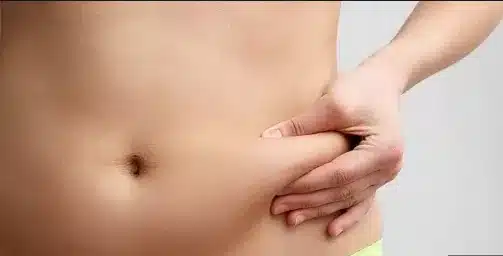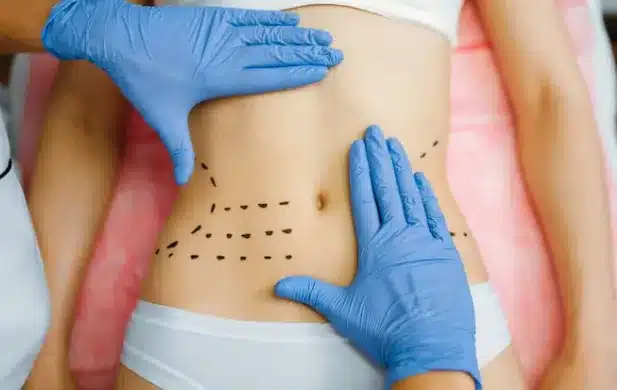Liposuction surgery is a popular cosmetic procedure to remove excess fat deposits from various body areas. It is designed to sculpt and contour specific regions, helping individuals achieve a more proportionate and defined physique.
Differences Between Liposuction and Lipomatic Surgery
While both liposuction and lipomatic surgery are performed to remove excess fat, there are notable differences between the two procedures:
- Technique: Liposuction utilizes a cannula to manually break up and suction out fat cells, whereas lipomatic surgery involves a vibrating cannula that mechanically breaks up the fat cells and suctions them out. The vibrating motion of the cannula in lipomatic surgery aids in emulsifying the fat cells, making them easier to remove.
- Precision and Control: Lipomatic surgery offers greater precision and control compared to liposuction. The vibrating cannula allows the surgeon to target specific areas with enhanced accuracy, resulting in smoother and more even results.
- Efficiency: Lipomatic surgery is generally considered more efficient than liposuction. The mechanical vibrations of the cannula facilitate easier and faster fat removal, reducing surgical time and trauma to surrounding tissues.
It’s important to consult with a qualified plastic surgeon to determine the most appropriate procedure for achieving your desired body contouring goals.
Techniques Used in Liposuction Surgery
Liposuction surgery can be performed using different techniques, depending on the patient’s unique needs and the surgeon’s preferences. Here are five commonly employed techniques:
- Tumescent Liposuction: This technique involves injecting a solution containing local anesthesia and epinephrine into the targeted areas. The solution helps numb the area, shrink blood vessels to minimize bleeding, and facilitate fat removal.
- Ultrasound-Assisted Liposuction (UAL): UAL uses ultrasonic energy to liquefy fat cells, making them easier to remove. This technique is particularly effective in treating fibrous areas, such as the back, male breast tissue, and upper abdomen.
- Power-Assisted Liposuction (PAL): PAL employs a vibrating cannula that mechanically breaks up the fat cells, enabling smoother and more efficient fat removal. The vibrating motion reduces the physical effort required by the surgeon and enhances precision.
- Laser-Assisted Liposuction (LAL): LAL involves the use of laser energy to liquefy fat cells before their removal. The laser also stimulates collagen production, which helps tighten the skin in the treated area.
- Water-Assisted Liposuction (WAL): In WAL, also known as hydro-assisted liposuction, a jet of pressurized water is used to dislodge and remove fat cells. This technique allows for precise fat removal while minimizing trauma to surrounding tissues.
It is essential to consult with a qualified plastic surgeon to determine the most suitable technique for your specific needs and desired outcomes.

Benefits of Liposuction Surgery
Liposuction surgery offers numerous benefits beyond fat removal. Here are advantages of undergoing liposuction:
- Improved Body Contour: Liposuction can reshape and contour various areas of the body, enhancing overall body proportions and creating a more aesthetically pleasing silhouette.
- Removal of Stubborn Fat: Liposuction can effectively eliminate stubborn fat deposits that are resistant to diet and exercise, helping individuals achieve their desired body shape.
- Enhanced Self-confidence: Achieving a more toned and proportionate physique through liposuction can boost self-confidence and improve body image, leading to a better quality of life.
- Recovery and Downtime: Lipomatic surgery often leads to a shorter recovery period and less downtime compared to liposuction. The mechanical nature of lipomatic surgery typically results in reduced bruising, swelling, and discomfort, allowing for a quicker recovery.
According to the Mayoclinic website:
To have liposuction, you must be in good health without conditions that could make surgery more difficult. These can include blood flow problems, coronary artery disease, diabetes, or a weak immune system.
Risks of Liposuction Surgery
As with any surgical procedure, liposuction surgery carries certain risks. It’s important to be aware of potential complications. Here are five risks associated with liposuction:
- Bruising and Swelling: Bruising and swelling are common after liposuction and can take several weeks to subside. Proper post-operative care and following the surgeon’s instructions can help minimize these side effects.
- Infection: Although rare, infections can occur after liposuction. It is essential to follow proper hygiene practices and take prescribed antibiotics as directed by the surgeon to reduce the risk of infection.
- Contour Irregularities: In some cases, contour irregularities or uneven results may occur, resulting in lumps, bumps, or asymmetry. Skilled surgeons aim to minimize these issues, but they can still arise, requiring further correction.
- Fluid Imbalance: During liposuction, fluids are injected and suctioned out, which can cause fluid imbalances in the body. Proper monitoring and hydration are essential to maintain a healthy fluid balance.
It is crucial to discuss these risks with your surgeon and ensure you are well-informed about the potential complications before undergoing liposuction surgery.
Summary
Liposuction surgery is a popular cosmetic procedure that offers individuals an effective way to remove stubborn fat deposits and achieve a more contoured and proportionate physique. With various techniques available, including tumescent liposuction, ultrasound-assisted liposuction, power-assisted liposuction, laser-assisted liposuction, and water-assisted liposuction, patients can choose the approach that best suits their needs.
While liposuction and lipomatic surgery differ in terms of technique, precision, efficiency, and recovery, both procedures provide several benefits, including improved body contour, enhanced self-confidence, and targeted fat reduction. However, it’s crucial to weigh the potential risks of liposuction surgery, such as bruising, swelling, infection, contour irregularities, and anesthesia-related complications.

FAQs:
- Is liposuction for weight loss? No, liposuction is not a weight loss procedure but rather a body contouring technique targeting specific areas of excess fat.
- Does liposuction tighten loose skin? Liposuction primarily removes fat, and while it may provide some mild skin tightening, it is not effective for significant skin sagging.



